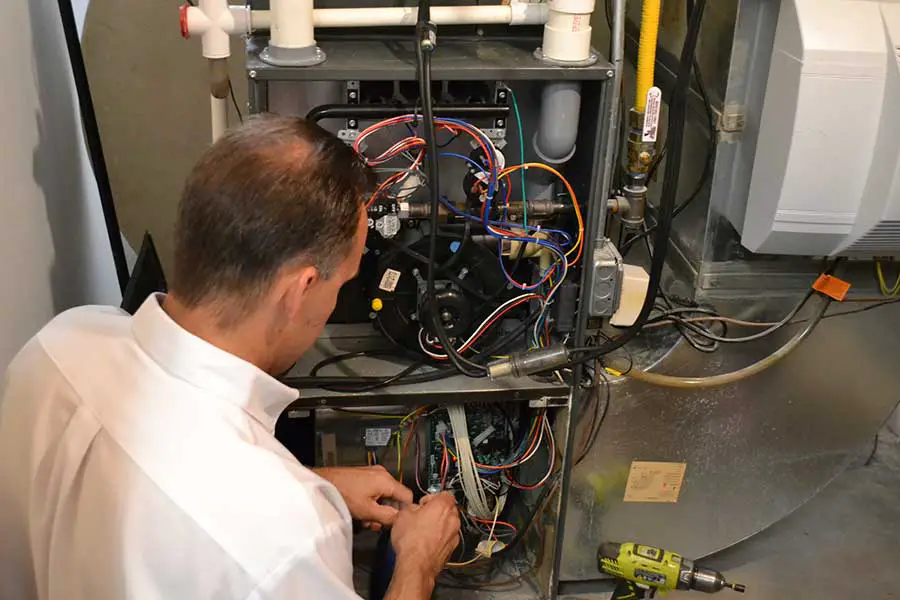Since every American is not a Shazam or a Thor, we are not impervious to electric shocks. A good zap and the end results would not be comical or anything fancy.
The US being an extensively electrified country has to look out for the safety of its electricians. Hence safety boots are a legal requirement at the workplace.
Usually safety boots have steel, composite and alloy fortification layers in them to protect the feet and the owner of those feet. Electricians are quite wary of Alloy Toe boots as they are good conductors of electricity. Is this apprehension baseless or is there some truth it in?
Can electricians wear alloy Toe boots???
Well the answer is both Yes and No.
Alloy Toe boots are not necessarily the best option for electricians, but if the situation demands it and if is used with care they are not that bad either.

Why and when should electricians avoid Alloy Toe Boots?
Safety shoes are footwear containing a protective reinforcement that ensures safety of the wearer and durability of the footwear. Alloy Toe boots are safety boots that has a reinforcement made of metallic alloys. The alloy Toe can be made of aluminium, silicon, iron, copper, manganese etc.
The electrical and thermal conductivity of alloys are quite high as compared to Steel and Composite materials. If due to some mishap the alloy reinforcement layer is exposed or is in contact with the skin, it can jeopardize the safety of an electrician.
If the electric current passes through the footwear, it will indeed make the body make a circuit with the earth and would probably end in the electrician getting electrocuted.
Alloy Toe Boots conducts heat as well and since electric sparks can generate a large amount of heat as well, there is a high risk of getting burnt.
Alloy Toe boots can also set off metal detectors which can be an inconvenience when checking in and out at work. Due to all these cons it is best for electricians to stay away from alloy toe boots while dealing with high voltage electricity.
Composite Toe Boots- the better Alternative
Hence the conductivity of alloys are what is wrong with Alloy Toe Boots, it is best to look into non-metallic reinforcement boots like composite toe boots when it comes to handling his voltage electricity.
Composite Toe boots does not conduct electricity or heat and hence can be a safer option for electricians. It won’t get an electrician electrocuted and it won’t burn his/her feet.
Even though alloy toe shoes can be very sturdy and strong in protecting the feet from falling objects, the alternative, the composite toe shoes can also withstand an average pressure of about 2400 pounds.
Alloy Toe vs Composite Toe
| Alloy Toe | Composite Toe | |
| Electrical Conductivity | Yes | No |
| Thermal conductivity | Yes | No |
| Appearance | Bulky | Bulky |
| Weight | Lightweight | Lightweight |
| Strength | Very strong | Moderately strong |
Why and when can electricians wear Alloy Toe Boots?
Alloy Toe boots may seem a bit bulkier as compared to Steel Toe Shoes but are definitely lighter than them. The lightweight feature thus makes alloy Toe boots one of the most popular safety shoes available in the market.
Alloys have great conductivity and hence allows free movement of both heat and electricity. But the alloy reinforcement in the safety shoes are fully enclosed within insulating layers. As long as the metallic portion is not exposed or is in contact with your body, it is completely safe to use them.
According to OSHA( Occupational Safety and Health Administration) standards, safety shoes in the electrical industry must provide insulation to the feet to prevent the body from completing an electric circuit.
Alloy Toe boots have rubber soles and layers of non-conducting materials making it safe to wear in situations where the electricians are dealing with low levels of electric current.
And alloy toe boots are approved by OSHA if they fulfill the ASTM (American Society for Testing and Materials) requirements.
It is applicable for electricians to wear alloy toe boots in the following circumstances:
1.) When there is a chance of heavy objects falling or rolling on to your feet
2.) When there is a chance of sharp objects piercing your feet
3.) When there is a chance of static discharge of electricity
Two types of Safety Boots for Electricians- EH and SD/ESD
The safety boots that are available in the US has to be approved by OSHO and must fulfil the requirements and standards of the American Society for Testing and Materials(ASTM).
ASTM provides labels on safety boots to signify which safety standard the boot meets. For electricians the two labels- EH and SD/ESD are relevant.
The label EH signifies Electrical Hazard. Such shoes/boots are meant to impede with the free of electricity through the shoe. EH shoes are meant to prevent the body from forming a circuit with the earth, thereby preventing the wearer from getting electrocuted. EH boots are designed to withstand upto 600 volts of electricity (dry conditions).
The boots made of leather and dielectric boots do not naturally qualify as EH boots, hence it is important to make sure that the boots have ASTM labels on them.
The label SD denotes Static Dissipating (aka ESD- Electrical Static Dissipating). These are safety shoes that are used in workspaces where there are risks of explosions and fires.
SD boots dissipates the static electricity that reaches the body, as very high voltage pent up in the body can be very dangerous to the individual. SD shoes need not always be safety shoes.
Any footwear that can minimise the accumulation of electric power in the body can be used as an SD shoe given that the SD label of ASTM is present.
How can electricians find the perfect pair of boots?
When you are out shopping for safety boots, it is important to keep in mind a few important points if you wish to find the perfect pair that will tick all your boxes.
It is important to ensure that the boots/shoes that you are purchasing have OSHO approval and meets the ASTM standards. The best way to ensure that is to check the boots for labels.
If you are looking for a pair of boots that will keep your body from completing a circuit, then you should opt for an ‘Electrical Hazard’ boot. The boot or the box will have the letters ‘EH’ labelled on them. This label will most definitely be accompanied by the ASTM ratings as well.
If you are looking for static dissipating safety boots, that would help you release pent up electricity from your body, then you should be looking for an ‘SD’(Static Dissipating) or an ‘ESD’(Electrical Static Dissipating) label.
Make sure that the pair is slip/skid resistant.
Make sure that the pair is waterproof.
Make sure that the boots have ample puncture protection and metatarsal protection.
If you can make sure that all these needs are met by the safety boots of your choice, buy them without hesitation and put them on for a safer working experience.
Top Alloy Toe Boots
1.) Timberland PRO Men’s 26078 Titan 6″ Alloy Safety-Toe
- With alloy safety toes, cement construction, and low-profile outsoles designed for superior traction.
- A comfort system that uses ergonomically designed elements to supply movement and provide critical support for long-lasting comfort.
- Heat-, Oil-, Slip-, and Abrasion-Resistant, Non-Marking Rubber Outsole
Prices pulled from the Amazon Product Advertising API on:
Product prices and availability are accurate as of the date/time indicated and are subject to change. Any price and availability information displayed on [relevant Amazon Site(s), as applicable] at the time of purchase will apply to the purchase of this product.
2.) Skechers for Work Men’s Synergy Ekron Alloy Toe Work Shoe
- Relaxed Fit
- Memory Foam
- Alloy Toe
- Slip Resistant
- Electrical Haz
Prices pulled from the Amazon Product Advertising API on:
Product prices and availability are accurate as of the date/time indicated and are subject to change. Any price and availability information displayed on [relevant Amazon Site(s), as applicable] at the time of purchase will apply to the purchase of this product.
3.) New Balance Men’s 412 V1 Alloy Toe Industrial Shoe
- Slip-resistant outsole tested according to ASTM F2913-18 to provide superior traction under various surface conditions
- Meets ASTM F2412-18 and ASTM F2413-18 Electrostatic Dissipative performance requirements that displace charges of electricity through a walking surface thus reducing static electricity hazards
- Upper features no-sew construction for a sleek fit and feel
- Adjustable lace closure for a customized fit
Prices pulled from the Amazon Product Advertising API on:
Product prices and availability are accurate as of the date/time indicated and are subject to change. Any price and availability information displayed on [relevant Amazon Site(s), as applicable] at the time of purchase will apply to the purchase of this product.










